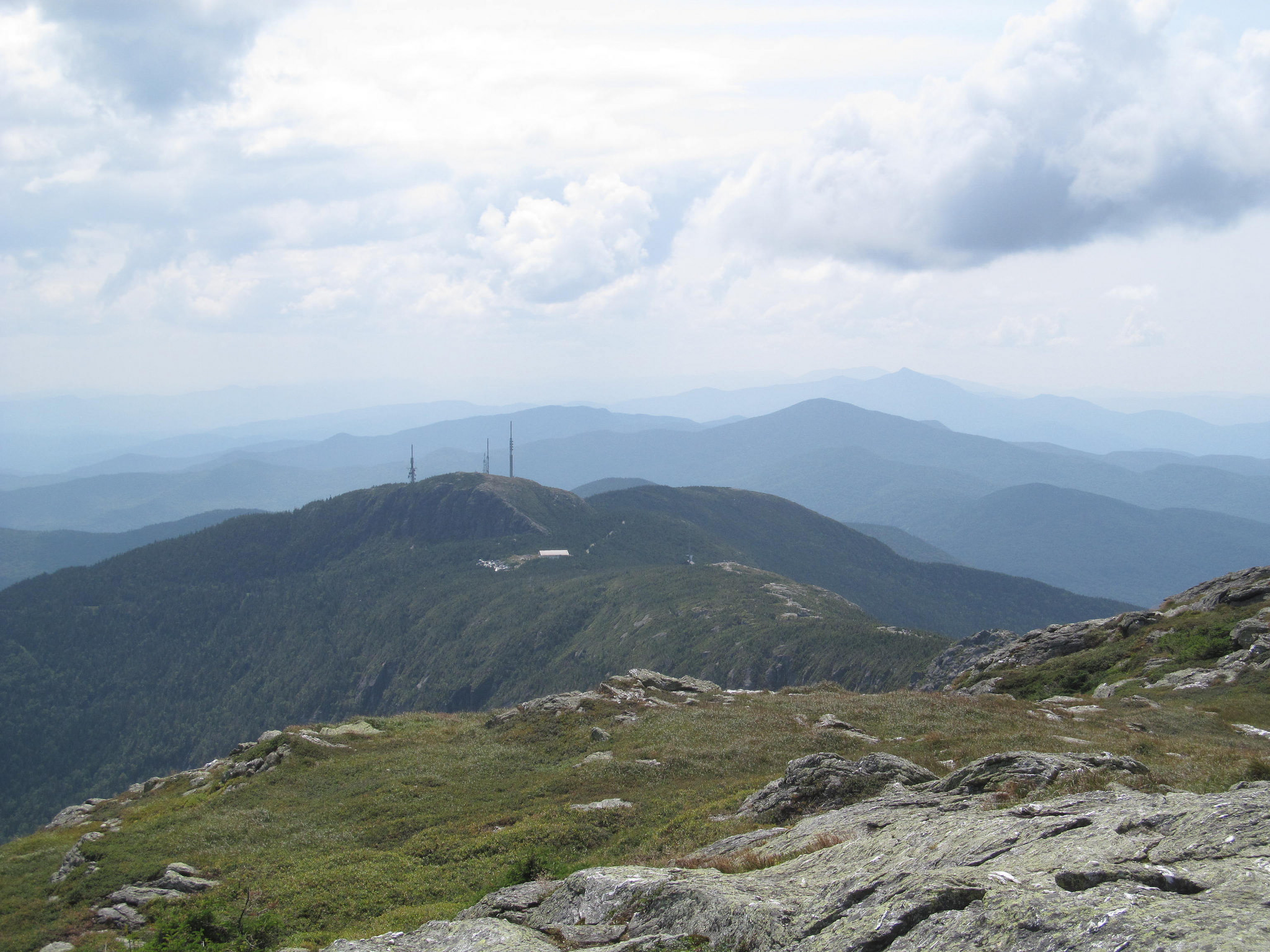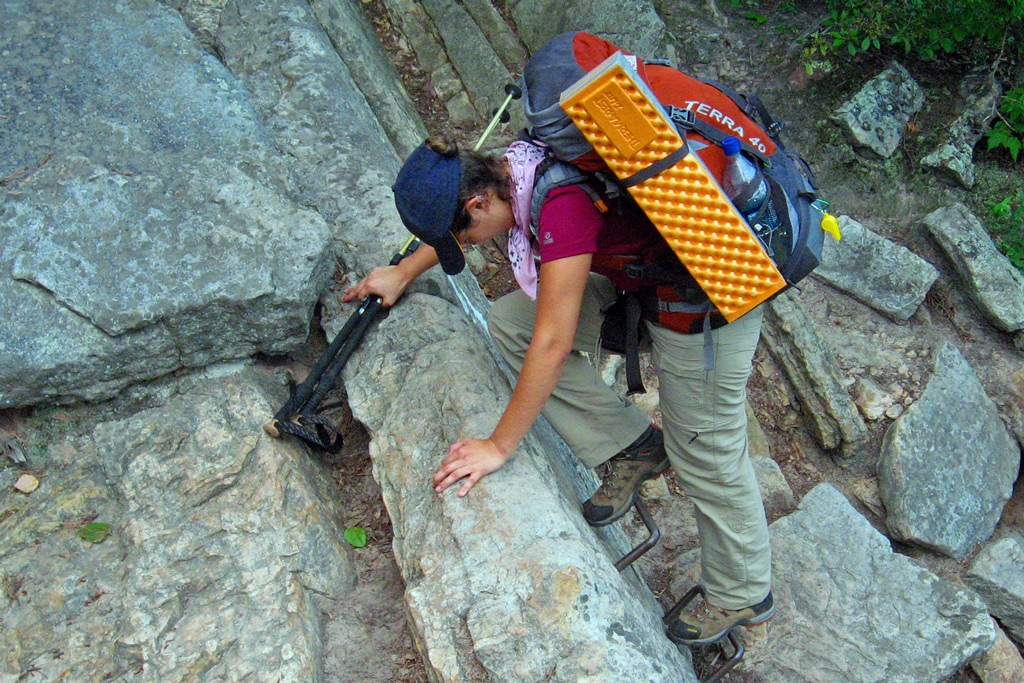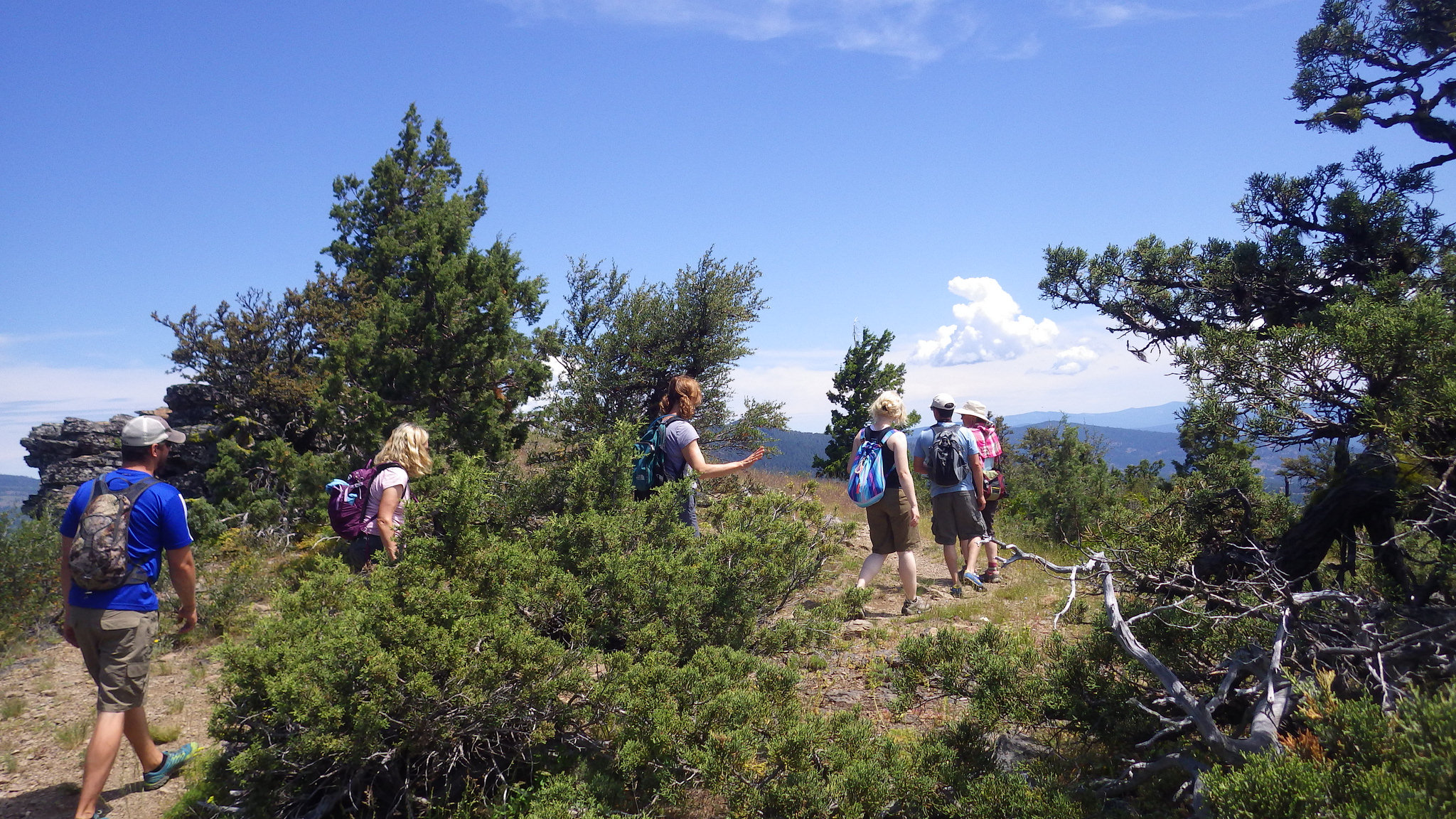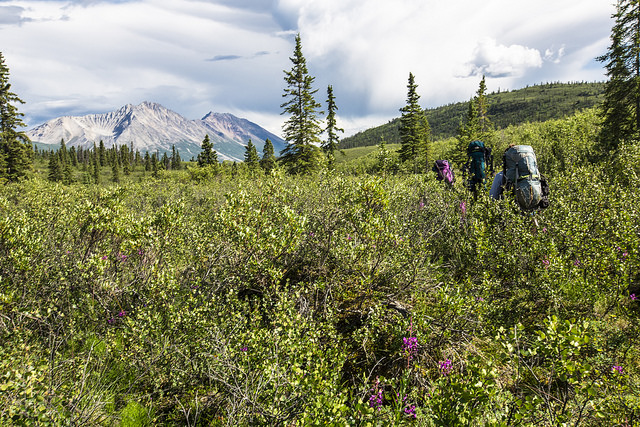The 3 Most Popular Styles of Hiking Deconstructed
Which style of hiking do you prefer? Some people hit the trail at the crack of dawn so they can reach a remote summit and still have time to make it back before nightfall, some people find themselves spending months on end following one continuous trail, and some people only go out for a few hours to find a nice spot for lunch. Though it is up to each individual hiker to categorize their adventure as they choose, I have observed that the vast majority of hikers conform to one of the 3 most popular styles of hiking; peak-bagging, long distance hiking, and day hiking. Outlined below is a guide on the similarities and differences between each unique style.
1. Peak-Bagging

Approaching the summit of Mount Mansfield, the highest peak in Vermont (photo courtesy of Doug Kerr)
Peak-bagging is a style of hiking that has its participants striving to reach every summit in a collection of particular mountains. Once every peak has been reached, the hiker earns the bragging rights of having completed the list. The tradition of peak-bagging began in the United States in the early 1900’s, when George and Robert Marshall, along with their friend Herbert Clark, set out to reach the summit of every 4,000+ foot peak in the Adirondacks of New York. The surveying technology at the time suggested that there were 46 peaks reaching an elevation above 4,000 feet, and by 1924, the trio “bagged” their final peak, launching the concept of becoming a 46er.
Since this initial completion of all 46 High Peaks in the Adirondacks, numerous other peak-bagging lists have gained popularity in the United States, some of the most noteworthy being the 48 4000-footers of New Hampshire, the New England Hundred Highest, and the Colorado 14ers.
Though the scenery of the mountains is important, many peak-baggers find themselves hiking regardless of the weather or season. This is because most peak-baggers possess an underlying determination to complete their objective, even if it means missing out on a vista, or hiking in the winter. Many summits frequented by peak-baggers have no views, and are incredibly difficult to get to, which only further illustrates the lengths hikers will go to in order to complete some peak lists.
Because reaching a summit is the primary objective of peak-baggers, the concept of following one particular trail isn’t significant. This spawns the two sub-categories of peak-bagging; bushwhacking and base camping.
Bushwhacking
Bushwhacking is a style of hiking that involves exploring off-trail areas of the wilderness. Relying on navigation skills, maps, and compasses, those who bushwhack travel to areas that are untouched by any sign of human impact. Bushwhacking is much more strenuous than normal hiking, and should only be attempted by those with expertise in off-trail navigation. However, despite the difficulty, many peak-baggers find themselves trekking through thick, untouched forests, striving to reach some of the most remote summits that appear on peak-bagging lists.
Base Camping

Base camping in the Adirondacks (photo courtesy of rklopfer)
Base camping is a form of overnight hiking that has its participants backpacking into a campsite, setting up their gear, and then using the same site as a base to come back to as they hike for the remainder of their outing. Base camping is especially popular in the Adirondacks, due to the close proximity of many of the ADK 46 peaks. It allows hikers to cover large amounts of milage, without having to lug around a heavy pack.
2. Long Distance Hiking

(photo courtesy of John Hayes)
Though individual definitions may vary, long distance hiking generally encompasses any backpacking journey that lasts for two or more consecutive nights. The name is self-explanatory; a long distance hike is an undertaking that requires a fairly significant physical, and time commitment, in comparison to a day trip. Much like peak-baggers, long distance hikers often find themselves chasing the larger objective of completing a specific trail. It is here that two sub-categories of long distance hiking must be defined. Long distance hikers will usually identify as either thru-hikers, or section hikers.
Thru-Hiking
Who are those crazy bastards that spend months on end, hiking thousands of miles, just to say they hiked a trail in its entirety? Those people are known as thru-hikers, and you’ll find a lot of them here at Appalachian Trials. At some point, they made the decision to put the “real world” on hold, just so they could go trampling through the mountains for the better part of a year. The defining characteristic of a thru-hike is that it is an attempt to complete a particular trail in one continuous shot. Most thru-hikers are either going through a transitional period in their life, or are retired, but you’ll still find plenty of people from all walks of life attempting a thru-hike.
Section Hiking

(photo courtesy of John Hayes)
Section hiking is the calling for any hiker with a desire to complete a thru-hike, who doesn’t have time and/or resources to do so. Section hiking is much like its name implies; it involves chipping away at a trail, piece by piece, in sections. The length of these sections varies depending on each specific hiker; some section hikers will complete trails in as little as two sections, and some do it in many more. When I section-hiked the Vermont Long Trail, the lengths of my outings varied from overnight trips, to hikes that exceed a week’s length. Section hiking is a very broad term, because it encompasses any completion of a trail that did not occur in one singular hike.
3. Day Hiking

(photo courtesy of the Bureau of Land Management, Oregon and Washington)
Whether you’re an experienced mountaineer, a former AT thru-hiker, or a complete beginner to the concept of hiking, taking a short day hike is sure to fulfill your desire for convenient adventure. I would be willing to guess that the vast majority of experienced hikers started out doing day hikes, before graduating to outings of greater length and difficulty. I still remember my first day hike, which ultimately launched my love of the outdoors, and my desire to pursue the other types of hiking mentioned in this article.
But going on day hikes isn’t just limited to those who are new to the concept of hiking; day hiking is a very enjoyable way for serious hikers and backpackers to get a taste of the trail life, without the time commitment needed to go on a long distance hike. After finishing the Vermont Long Trail in 2013, I continuously found myself driving back to the LT to take short day hikes, and re-live some of my favorite memories from the trip. Additionally, going on day hikes allows you to experience familiar scenery in a different setting. Experiencing the summit of a mountain during the day in July, during a sunset in September, and during a white-out in February, gives a hiker a much more fulfilling perspective on the nature of that particular environment. This perspective is lost if a spot is only visited once, as the hiker will having nothing to compare the sole visit to.
One thing that peak-baggers, long distance hikers, and day hikers all have in common, is an overall appreciation of the outdoors. It may be fascinating to categorize different types of hiking, but these categories are insignificant in comparison to the ultimate goal of every hiker; to have fun. Enjoyment is the fundamental principal behind any outing, and so long as it is achieved, the outing was successful, regardless of its category.
Can you think of any more categories that could have been included? What type of hiking is your favorite? Leave a comment below!
This website contains affiliate links, which means The Trek may receive a percentage of any product or service you purchase using the links in the articles or advertisements. The buyer pays the same price as they would otherwise, and your purchase helps to support The Trek's ongoing goal to serve you quality backpacking advice and information. Thanks for your support!
To learn more, please visit the About This Site page.




Comments 24
Fun article, love the categories! One problem: this article uses the word “it’s” throughout to mean “belonging to it”. This is wrong, “it’s” means “it is” and nothing else. Possessive “its” never has an apostrophe.
You’re totally right, I’m fixing this right now! Oh my high school English teacher would kill me right now, she always used to catch me doing that…
Peak bagging is way beyond my scope, I do not have the opportunity to either day hike or section hike so I am going straight to the thru hike. We’ll see how it goes from there. ;0)
Best of luck to you 🙂
You forget the largest group: the armchair hikers! We hardy souls routinely trek to the library, the bookstore or even to -the Amazon! ( the Web site, not that icky, smelly place in South America -please!) we load up on volumes and push ahead. For us, a thru hike involves reading a book in one sitting!
Bill, I’m with you. Possible other name: Dream hiker. 🙂
But I’ve got a feeling that every “armchair hiker” is just one of the types of hikers on this list in disguise 🙂
Yeah, Kyle, I’ve long dreamed of being a thru hiker, but have just gotten fatter & older, although not quite as old as Grandma Gatewood was on her first! So… maybe… (lol)
I consider myself a peak bagger, however I don’t conform to any lists. When I go hiking it’s always to summit a peak. I prefer to go out and hike whatever I feel like rather than ticking off a peak on a list. I live in Colorado and don’t care to complete any list. I have a tally of 14ers, 13ers, and 12ers, and peaks done by range. I have no interest in hiking all the 14ers, Gore Range 13ers, Tenmile Peaks or whatever. There are many peaks I will not do for different reasons. When I go out, I prefer to find isolated and unique areas. I like the peaks that are off the beaten path and most people have never heard of them. There is too much beauty out there to stick to a rigid list. I’ve never completed a list and never will.
We have a new category in Minnesota this year – the Challenge Hiker. The MInnesota DNR has issued a 125 mile challenge for the 125th anniversary of Minnesota Sata Parks and Trails. The North Country Trail Association also has the Hike 100 NCT challenge going on this year to celebrate the 100th anniversary of the National Park Service. For the Challenge Hiker, it’s all about bragging rights and before long I’ll be bragging!